We often discuss the importance of developing a storyline when creating or re-imagining a historic home. Doing so provides a creative script for our design team (and our clients) and helps us communicate the romance, character, and stories of that home. One way we bring that script to life is by introducing authentic architectural elements such as reclaimed wooden beams into our home designs. These beams provide a direct connection with the past while telling a wonderful story of their own.
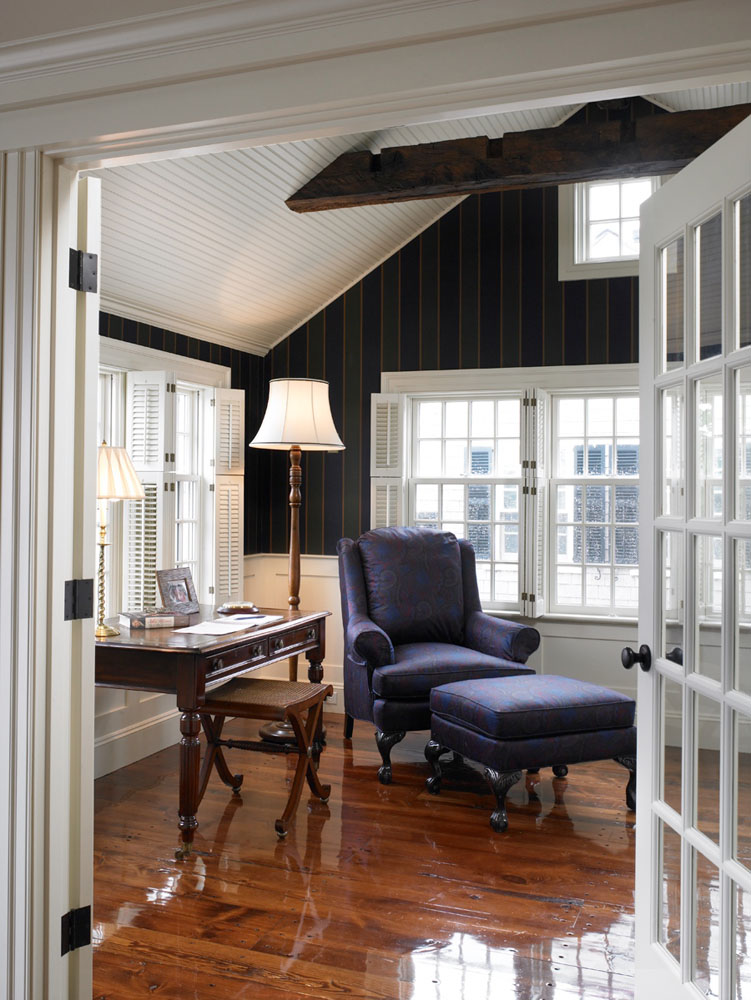
Reclaimed wooden beams are just that – beams claimed from a previous lifetime. Most reclaimed wood is salvaged from centuries-old barns or homes where it underwent years of extensive weathering. The original timber had to carry the weight of structures built by settlers developing our farming industry hundreds of years ago. Many of these felled trees were already 200-300 years old – but considered “virgin growth” because they had never been cut before. Today, many trees are genetically augmented to grow more quickly, but at that time, trees grew at slower pace creating tighter growth rings and a denser consistency, which enhanced the overall markings and character.
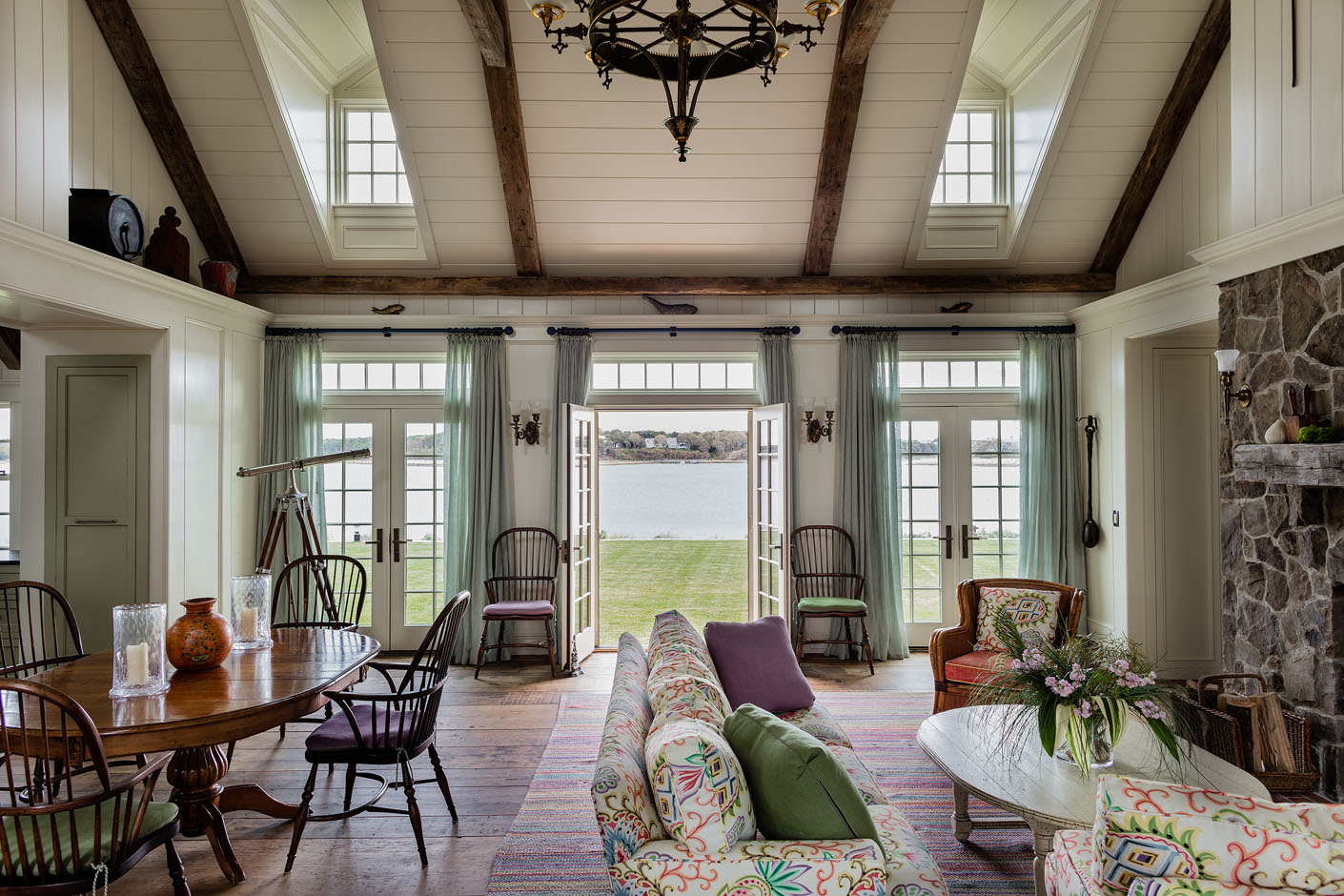
The three most common types of reclaimed wooden beams are hand-hewn, rough sawn, and re-sawn beams. These styles serve varying design rolls and are differentiated by the process used to square the wood. Before the mid-1800s, sawmills were uncommon in rural areas, so hand-hewn beams (the most labor intensive) were cut and shaped by the blows of an axe. Hand-hewn beams often display unique tool markings within the wood, and because of their rich authenticity, we often use them to add rustic character when re-imagining historic homes.
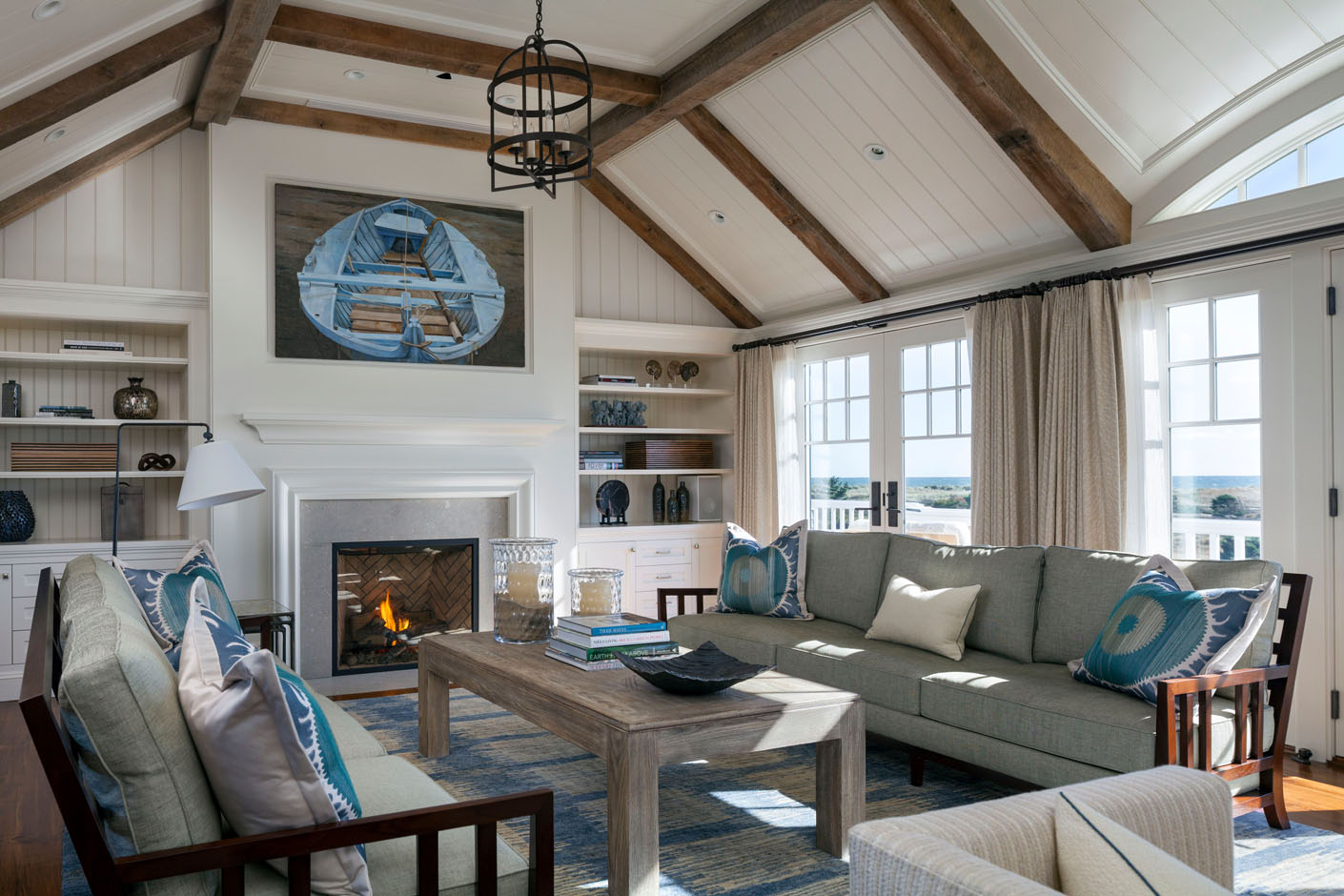
With the rise of machinery, saws eventually replaced the work of axes, and beams were cut and shaped with large, circular blades. Reclaimed rough sawn beams often display the original teeth marks from the blade, and, like hand-hewn beams, they are historically desirable in classic restoration. Lastly, reclaimed re-sawn wood beams provide a more finished design option; having been deliberately shaped over the years to show fewer markings, they offer a more refined look.
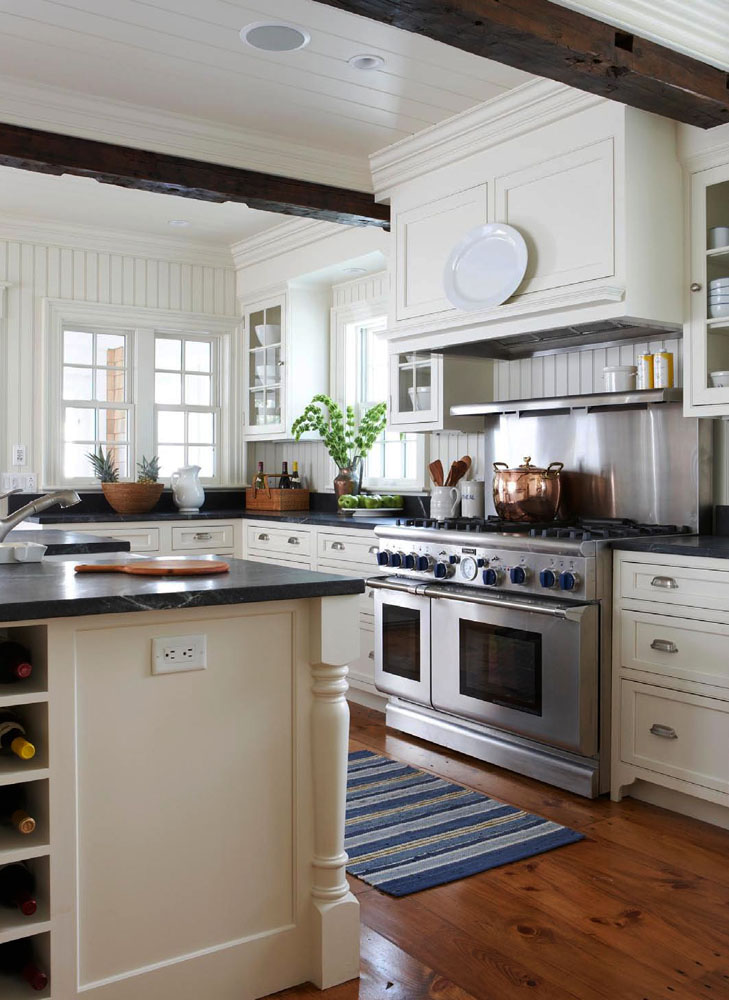
Centuries ago, wooden beams were strictly used for structural support within a building. Today, we introduce them as an architectural detail that adds age and patina to a space. They can picture frame the shape of the ceiling, giving it a more structured appearance while adding rhythm and scale that might otherwise not exist. While they work particularly well in dens, studies, and kitchens reclaimed beams can also add warmth and history to bedrooms and transitional spaces.

When creating a storyline, we imagine how certain parts of a home were added on to or reconfigured as families grew over generations. For example, when designing a particular home on Martha’s Vineyard, our script said that, in the early 1800s, the midshipman’s barn was carefully attached to the original 1790’s main house. When re-imagining that space from a barn into a family room, we introduced a trussed ceiling using reclaimed beams to provide an authentic structural appearance while adding texture and character into the space.
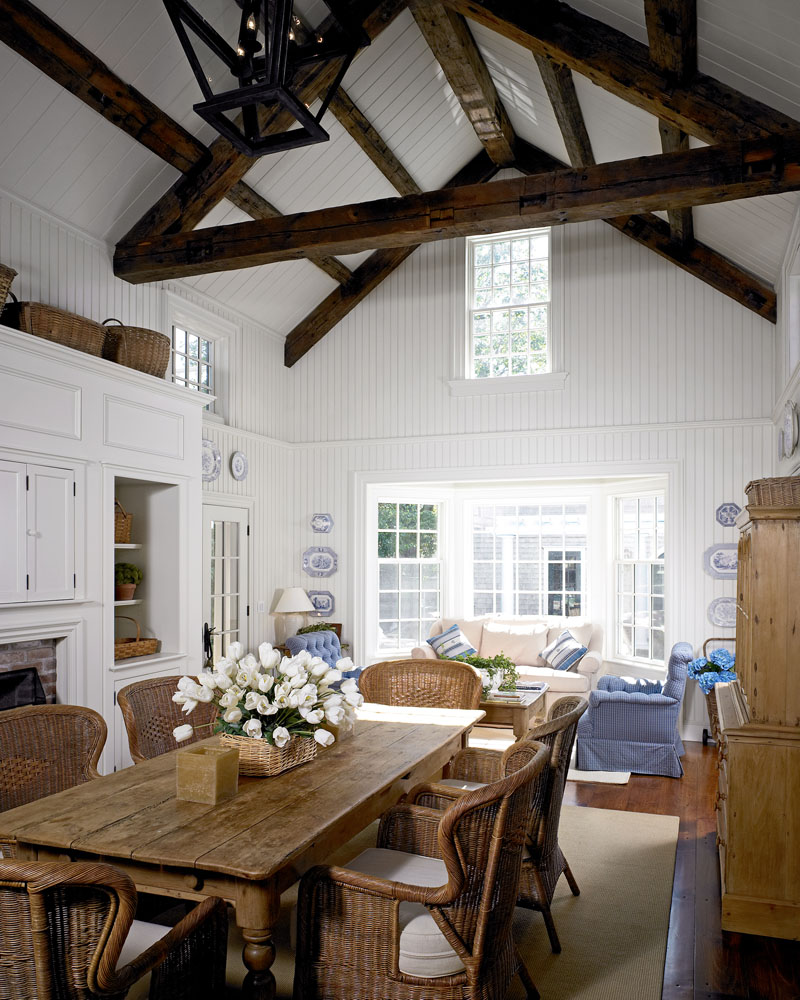
Reclaimed wooden beams represent an important design element that directly connects us with the past by infusing a space with warmth and history. The character and imperfections of the wood provide us with tangible, visual hints of years gone by, reminding us of the craftsmanship, romance, and stories the beams could tell if they were able.